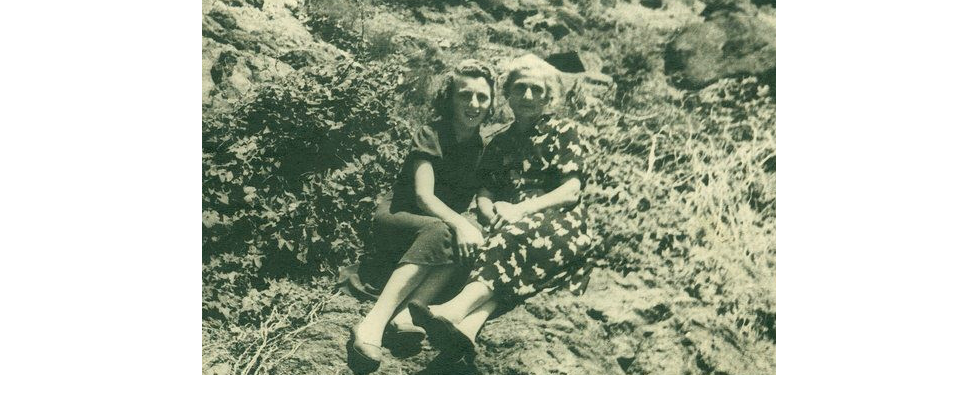Welcome to our website
In 1996, I was doing my second postdoctoral studies at the Aristotle University of Thessaloniki, when the sorrow news about my mother's death reached me. My mother Nina Lazareva (Lazaridou) was born to Pontic Greek parents in Madan village (Northern Armenia) in 1931. Her 85th birth anniversary will be celebrated this September.
Many years later, I transferred these memories and feelings about my mother into the study of the history, traditions, customs, and ways of life of Pontian Greeks living in Armenia. I have visited all Greek settlements of Armenia. My vast photo collection is a documentary evidence of the various aspects of their life and history. The first ethnographic photographic exhibition was opened at the Greek Consulate of Greece in Yerevan in 2009, where my photos are still in view.
According to the public census of 2011, the Greek resident population of Armenia numbers 900 people. They live in different towns and villages of Armenia: Yerevan, Hrazdan, Etchmiadzin, Stepanavan, Vanadzor, Alaverdy, Gumry, Akhtala, Yaghdan, Koghes, Madan, Shamlugh, Hankavan. According to the public census of 1989 the number of Greek resident population of Armenia reached 4,650 people. After the collapse of the former USSR the majority of them have left the country amd moved to Greece, Russia etc.
It's important to note that 180 ethnic Greeks are currently residing in Karabagh.
The ancestors of Pontic Greeks living in Armenia today are of Pontic Greek descent and moved to Armenia as miners. They processed the mines of Akhtala, Madan and Shamlugh (Northern Armenia).
According to Garnik Asatryan and Victoria Arakelova’s ‘’The ethnic minorities of Armenia,’’ ''...The Greek population of Transcaucasia emerged as a result of several waves of migrations having started mainly in the 2nd to the 1st centuries B.C. and continued on until the 13th century, i.e. the period of the Seljuk and Mongol invasions. Nonetheless, the core of the Hellenic ethnic element in Georgia and Armenia are descendants of the mining workers invited in late 18th century to Armenia and partially relocated to Central Georgia in the 1820s, as well as migrants from Asia Minor and the inner Turkey. Armenia’s Greeks, as in the whole of Transcaucasia, speak the Pontic dialect, an extension of the Ionic dialect of the Old Greek language. A certain layer is occupied by the migrants from Trabzon city and Kars region in the 19th – 20th cc. (endoethnonym: ROMEYUS)...'‘.
While visiting Greek villages of Armenia, I noticed that the majority of settlements are located next to mines and that there are Greek churches and chapels built in each settlement. Let’s reconstruct some details related to the daily life of the miners. After a hard working week , on Sunday, the whole family would be attending a church liturgy liturgy at the church to pray for a good healthy and a prosperous life. Currently there are no acting Greek churches in Armenia. Local Greeks attend the Russian Orthodox Church in Yerevan or /and various other Armenian Churches. On the 21st of September there is a tradition to visit Akhtala Monastery (Northern Armenia), which has become the place of worship for the Greeks of Armenia.
When people of different national backgrounds are the citizens of the same state, they share the same homeland, they share the same history. During Sardarabat Battle for Armenia’s independence in 1918, among Armenians fighters there were the Greek heroes, namely the famous captain Vladimir Sakillary. If one goes further into history, he/she will find the name of USSR”s hero Konstantin Khadjiev, the ethnically Greek soldier of the Second World War, who was born in Madan, the village of my mother.
''Once again I felt the deep roots uniting the Armenian and Greek peoples."
From the notes of the First Greek Lady May Papoulia made at the register of the Museum-Institute of Armenian Genocide
(Yerevan, June 27, 2008)
On the 19th of May, the Day of Commemoration of the victims of Pontic Greek Genocide, the representatives of the Greek Embassy in Yerevan, the Greek Community of Armenia, Armenian officials and many ethnic Armenians visit the Tsitsernakaberd Genocide Memorial in Yerevan, Armenia. On the 24th of April, the Commemoration Day of the Armenian Genocide of 1915, Greek Diplomatic authorities, the Greek Armenian Community of Armenia visit along with ethnic Armenians the Tsitsernakaberd Memorial.
Dr. Marina Mkhitaryan,
January 2. 2016
Yerevan
